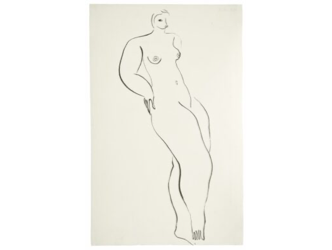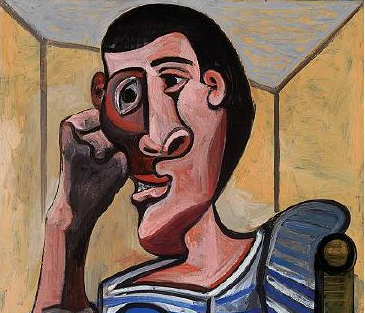Back then, money and institutional support was primarily found on the other side of the Atlantic.
But thanks to globalisation, artists from every country are nowadays enjoying success in the market and on museum programmes, and are often relocating to places far from home.
The forthcoming Venice Biennale, curated by France’s Christine Macel, which opens on 13 May, clearly reflects this phenomenon.
More than a third of the 120 artists there are from the Middle East, Eastern Europe, and Latin America.
Each of these zones also corresponds to territories harbouring potential new collectors.
The art market and its main players, the dealers and the auction houses, are driven by a spirit of conquest.
The traditional consumers of art, the Europeans and the Americans, no longer suffice for this sprawling market.
Cue Arco in Madrid, which takes place this year from 22 to 26 February.
Arco has not only become the country’s most important commercial and cultural event for contemporary art but is also a European platform for current Latin American output, including Brazil.
Arco director Carlos Urroz explains, ‘To Latin American artists, a ticket to Arco represents an endorsement of their career. For slightly under twenty years now, Latin America has been one of the new forces on the world market. Because public organisations tend to be a little more patchy there, private initiatives from art collectors, and by that I mean museums, are multiplying.’
Of the 200 galleries taking part in Arco this year, 68% are overseas galleries, and of these 41 are from Latin America.
The guest country for this 2017 edition is Argentina, which has 12 galleries. But there are Argentinian artists on view at a significant number of booths across the fair, as the selection of photos shows.
Carlos Urroz give his point of view about Buenos Aires:
Buenos Aires also happens to be the partner city of a new initiative from the ArtBasel Fair called ArtBasel City, whose aim is to promote a city using its international cultural know-how.
Former financier Ignacio Liprandi opened an art gallery in Buenos Aires seven years ago. Across his two stands at Arco, he is only showing work by Latin American artists. Prices range from $3,000 to $15,000, perceptibly lower than those advertised elsewhere for newcomer artists.
‘We are a young gallery with young artists. We have to sell in volume to survive. Since the gallery opened, I’ve taken part in no fewer than 60 fairs,’ he explains before adding: ‘In Argentina the political situation has improved but the economy has still not completely recovered and the art market remains sluggish. We are expecting a great deal from the ArtBasel City initiative.’
At his stand one finds abstract-geometric paintings in the grand Latin-American tradition by Magdalena Jitrik (born 1966 in Buenos Aires) priced at $5,000 to $7,000 dollars. Her work was purchased by the famous Madrid museum Reina Sofia.
The Parisian gallery Mor-Charpentier, which has been up and running since 2010 and has a Colombian co-founder in the shape of Alex Mor and a french one Philippe Charpentier, is also at Arco.
Half of its programme is from Latin America, including a presentation of the work of Liliana Porter (born 1941). This Argentinian artist who is currently living in New York was selected by Christine Marcel for the Venice Biennale. Her conceptual works (installations, photography) feature in collections including Moma, New York.
In Madrid Mor-Charpentier gallery is presenting her photos, all self-portraits, from 1976. Reprinted in 2014 in editions of three, they have an $18,000 price tag.
And for Alex Mor, the Spanish fair is a major meeting ‘that blends together, and this is unique in the world, European and Latin American audiences. The latter offers its own particularities from one country to the next. The Colombian market, for example, has become very international whereas the Brazilian market has collapsed. As a rule, Latin American collectors support the Latin American market first and foremost.’
It would seem that other galleries too, and not the least among them, are also betting on the somewhat erratic market from this part of the world. The very powerful gallery Hauser & Wirth, for instance, which operates from Los Angeles to Zurich, is taking part in Arco for the first time, whereas it cancelled its slot at Fiac a few months ago.
Until 26 February. www.ifema.es/arcomadrid_01.
Support independent news on art.
Your contribution : Make a monthly commitment to support JB Reports or a one off contribution as and when you feel like it. Choose the option that suits you best.
Need to cancel a recurring donation? Please go here.
The donation is considered to be a subscription for a fee set by the donor and for a duration also set by the donor.












